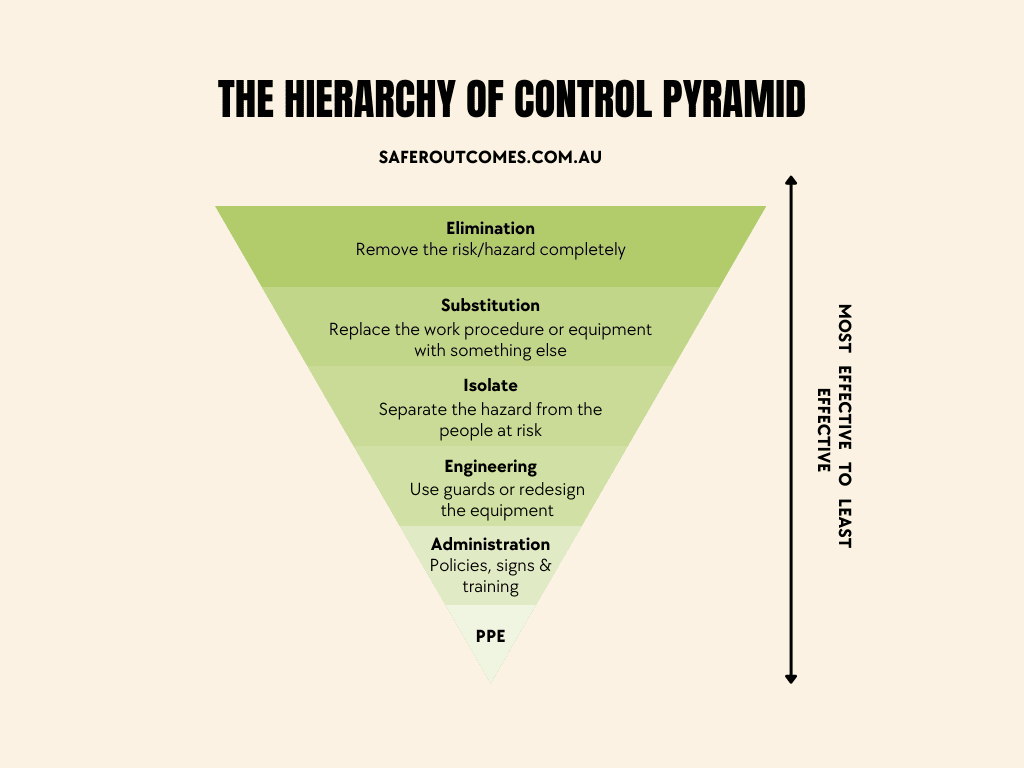Did you know that every year, millions of people are injured as a result of manual handling injuries? Manual handling is the process of moving or carrying an object with your hands or arms. This can be a very dangerous job if not done correctly. Think about the last time you moved something heavy, whether you were lifting a box from the ground, or carrying it up the stairs, you were using manual handling techniques.
Manual handling is one of the most common ways to injure your back, and can lead to long-term damage if not done correctly. That’s why it’s important to learn the proper techniques for manual handling. In this blog post, we will discuss some basic tips for safely manual handling. Keep these in mind next time you need to move something heavy, and stay safe!
What is Manual Handling?
Manual handling is a term used to describe the process of moving or carrying an object with your hands or arms. Instead of using a tool, you’re using your body, and that can be dangerous if not done correctly.
In Australia we call this a ‘hazardous manual task’.
Some manual tasks can stress the body and lead to acute or long term muculoskeletal disorders. Hazardous manual tasks are tasks that require a person to lift, lower, push, pull, carry or otherwise move, hold or restrain any person, animal or thing that involves one or more of the following:
- repetitive movement
- repetitive or sustained force
- high or sudden force
- sustained or awkward postures
- exposure to vibration.
Hazards can come from:
- work tasks and how they’re performed
- work design and management
- the tools, equipment and objects handled
- physical work environment.
To prevent injury, you should:
- identify hazardous manual tasks
- eliminate or minimise the risks associated with them.
Any time you need to lift something with your hands or arms, safe manual handling techniques should be applied. This could be moving boxes from one room to another room in your house; carrying groceries from the car to your house; or completing taks in the course of your job. Safe manual handling depends on your body’s ability to properly support an object, hold it in place, and move it without causing injury.

What are the Risks of Manual Handling?
The most common injuries from manual handling are sprains and strains. Most sprains and strains happen to the back, shoulders, or neck. If something is not carried correctly it can lead to serious injury. Some injuries can be immediately felt such as ‘twinging’ your back, or can only be felt after more long term exposure to the hazard.
Proper handling procedures are vital to reduce the risk of serious injury. When you lift something incorrectly, there’s a greater chance of your back or another part of your body being injured. Even if you don’t think you’re hurting yourself, you could be doing long-term damage without knowing it.
As previously mentioned, the risks can lead to long-term damage if it is not done correctly. This could lead to serious injuries including:
- Lower back pain
- Rotator cuff injury (the muscles and tendons in your shoulder blade)
- Headache or Migraine
- Neck ache or pain
- Pelvic pain (in women)
- Sprains and Strains (e.g., ankle sprain, back sprain)
- Wrist injury
Research shows that manual handling techniques can lead to long-term problems as well as short term injuries. In a 2016 research paper from the Australian Occupational Therapy Journal, it is noted that “it is well recognised that manual handling tasks can lead to musculoskeletal injury (MSI), especially of the back” and the most common injuries from manual handling include sprains and strains.
How do manual handling injuries happen?
Almost all jobs will include manual handling as part of the role. Even office jobs can involve manual handling. From construction workers to library workers, everyone is at risk.
Manual Handling injuries often happen during:
- Lifting
- Putting down
- Turning
- Pulling, pushing and dragging
- Repetitive movements
- Long or awkward reaches
- Using the wrong tool for the job
- Shifting loads between hands
- Holding objects too close to your body.

What are the manual handling risks for Specific People?
All employees are at risk of injury, but some people have a greater risk than others. Identifying the risk factors will allow you to reduce the likelihood of getting injured while performing manual handling activities. You may not even realise you are at greater risk of manual handling injuries.
People particularly at risk from manual handling include:
- People who regularly carry out manual handling tasks. Workers in construction, healthcare, manufacturing, warehousing, retail and hospitality.
- The young and elderly
- Women who are pregnant or have given birth in the past year
- Those with pre-existing injuries. If you have a pre-existing injury it is important to communicate this to your manager so they can make changes to avoid causing further damage
- People who may not be aware of an existing injury
- The obese, as this increases the risk of injury due to increased fat around the waist and extra stress on their lower back
- Employees with a disability or medical condition that affects their abilities to carry out manual handling tasks without assistance from others
- Those taking medication which may cause drowsiness or impact their ability to focus
- People with high blood pressure
How to prevent manual handling injuries?
Though manual handling tasks are necessary sometimes, there are ways to reduce stress on your body during these activities. Here are some tips that can help you do it better:
- Use appropriate tools where possible. If you don’t have the right equipment, consider how you could make or ask for it.
- Use your body’s strong sides when possible and avoid awkward reaching or twisting motions. Try to avoid bending and stooping if you can.
- If an object is too heavy, don’t try to lift it alone – get help from a colleague or use machinery instead.
- Don’t bend down until you need to pick something up. If possible, keep objects close to your body while moving them.
- Avoid carrying an object for a long time if it’s too heavy. Make several short trips instead of one longer trip.
- Use the palm of your hand rather than your clenched fist when handling delicate items.
- Don’t grip an object too tightly or hold it too close to your body.
- Take a break and stretch if you find yourself doing the same task for a long time. If possible, make changes to your workflow so you can take more regular breaks.
- When lifting something heavy, keep your back straight, tighten your stomach muscles and lift using your leg muscles, not your lower back. Make sure you’re close to the object before lifting it.
- Ensure your workplace has good housekeeping to prevent trips and falls when carrying items.
- Ensure your workplace has good lighting and that you can see clearly what you’re doing.
- If you need to move something on or off your work surface, clear the area beforehand. If you’re unable to do this, consider using machinery instead.
- Make sure that any equipment you use is correctly maintained and safe for use.
- Make sure your employer provides training in manual handling techniques if they have not already provided it. Remember practice makes perfect.
- If you are injured, seek medical attention immediately. Speak to your employer about how the injury occurred and whether any changes can be made in the workplace to prevent it happening again.
- If you’re unsure if something is wrong, always ask for help and report it. It’s better to be safe than sorry.
You can also complete an online course in manual handling to help keep you and your employees safe.
You can also do a risk assessment to detirmine the level of risk involved in a task, and then use the ‘hierarchy of control’ to help you decide which controls would be most suitable.

Manual Handling Tool Box Talk
A very important, and easy to implement way to train your employees in manual handling is to give a manual handling tool box talk. It only needs to take a couple of minutes, and it will keep the information fresh in everyones mind.
Every employee should take the tool box talk seriously. If you make manual handling fun, you can help reduce injuries and improve your work place culture. You should try to make it interactive by asking questions like; “What is the most common workplace injury?” or “Who can tell me how to lift safely?”.
How often do I need to give a manual handling tool box talk?
You should do a manual handling toolbox talk before going on a new project or when your employees have been changed. It is an important aspect of keeping your workplace safe, and can save lives. We have an excellent guide 5 Toolbox Talk hints and tips to make your life easier, so be sure to give it a read.
Manual handling is something that many employees are required to do on a daily basis. However there are ways of reducing the stress on your body during these activities if practised correctly. It’s really simple to incorporate into your workflow, and can save lives if implemented properly. If you keep these things in mind when managing manual handling, you should see a reduction in injuries within your workplace. Manual handling is important, so don’t forget to give it the attention it deserves!
How can Safe-R Outcomes help your business?
Our Professional subscriptions contain many essential documents including:
- WHS Management Plans / Safety Manuals
- SWMS (if the job entails high risk tasks)
- a range of SOPs, Registers, Toolbox Talks, Checklists and Policies
These can all be downloaded and are not blank templates, so can be used immediately.
We also provide Induction training to help you on-board new employees and contractors.
As you can see it is all done for you so it makes it nice and simple. You can find out more on the Industries and Professions page.
If you’re concerned about the time commitment and knowledge required to implement the correct documents, procedures and training for forklift safety, Safe-R Outcomes can help. We strive to reduce the time and cost for businesses to implement their legally necessary safety requirements.


